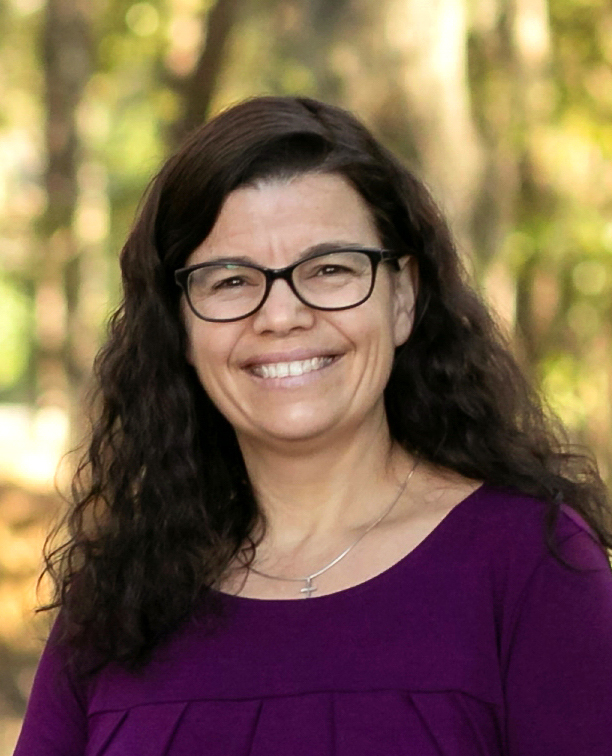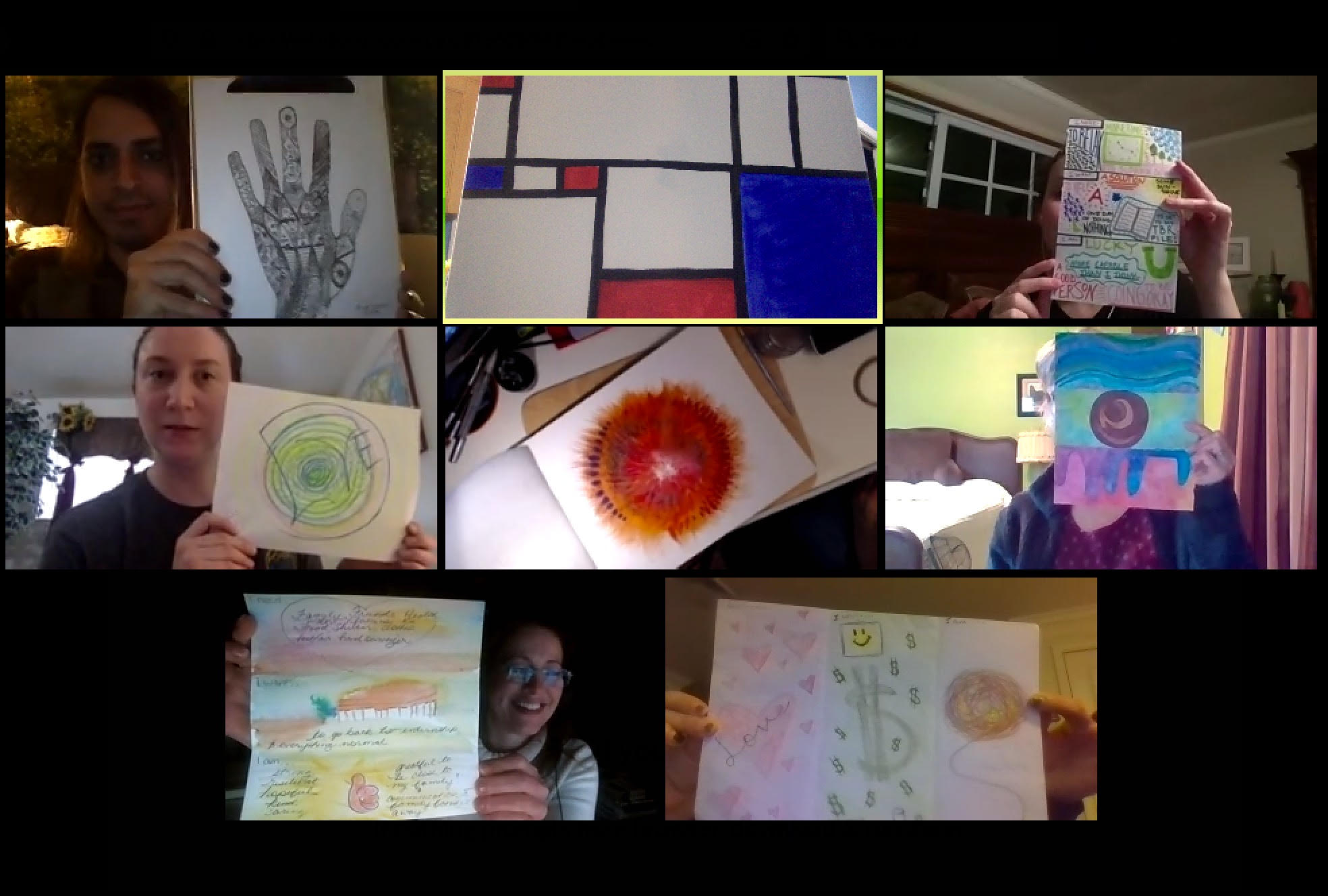March 20, 2020 | Carolyn Brown Treadon, PhD, ATR-BC, ATCS
To say the last week has been challenging is an understatement! As we all quickly learn to navigate challenges in our daily lives in response to COVID-19, many are also working to get courses and clients transitioned to an online platform. With the help of my colleagues at Edinboro University, where we offer an art therapy master’s program that can be completed 100 percent online, I put this resource together to offer some advice to colleagues in other programs navigating this transition. We hope that these tips will be helpful to you.
1) Quality matters: Tips for setting up an online classroom or session
Much like a regular classroom or session, maintaining structure, consistency and clarity are essential. Often, less is more. Predictability can be very helpful and calming – it can be beneficial at the onset to discuss the structure that you will be using as you begin class or session.
When setting up an online class, whichever platform you are using should allow you to set up material in modules. You can use these to organize material, post readings and additional resources. When assigning work, include clear instructions that includes how the assignment should be completed (format) and where it should be submitted (email; Dropbox, assignment folder). Many platforms also allow you to create online rubrics, which can make assessing the assignments more streamlined and allow students to see expectations.
As students adjust, and you do too, it can be beneficial to coordinate with other faculty to strategize on assignment due dates. Having everything for all classes due on the same day often results in lower quality of work.
2) Making art: How to incorporate art making
Making art is crucial! As art therapists, especially during times like these, it is important not to lose the art in class or sessions and for our own self-care. Be prepared with prompts to help students or clients begin the creative process. Designating the materials needed before beginning will help participants come to the session prepared. This can include limiting size of the surface, materials to use, and setting a time limit for work. It is important to consider media dimension variables to ensure as many safe guards are in place as everyone adjusts to the new setting.
Processing through a virtual platform functions similarly to a classroom or in-person session. While not all cameras are equal, allowing participants to show and discuss their work is possible. Setting a time limit for the processing helps add to the structure of the class or session. It may be important to reinforce that not all work needs to be complete to be discussed. You may need to remind students and clients that this can be the beginning of a piece that they can finish at a different time.
As clinicians, we often neglect to nourish ourselves in the same way we ask our students and clients to nourish themselves. It is important to take time to identify what you need to feel nourished.
3) Connecting: Building relationships and interpersonal skills
While many find the online environment impersonal, it doesn’t need to be. Setting parameters for etiquette, such as muting microphones when not talking and using headsets (with microphones if possible) can help make the experience better for everyone. Excessive background noise can present distractions on many levels for participants.
Allow time for check in. This can be through a brief art experiential or allowing participants to verbally check in – this goes a long way in creating a sense of community. If your online platform includes a chat function, try to monitor and respond to questions or comments.
Losing the ability to ask questions in-person may lead to an increase in questions coming via email. While time consuming, this is a necessary process. Accessibility and availability help add to the sense of connectedness and community. Asking for feedback, what is working well and what is not, can also help improve engagement.
4) HIPAA and online platforms
Regardless of the platform you may choose, there are several good options out there. It is important to consider the limitations and HIPAA compliance.
Several platforms that have come up include Doxy.me, Vsee and Zoom.
- Doxy.me is HIPAA compliant, using encryption for security and does not store personal information. As a meeting originator, you can set up a waiting room, where participants will check in and you start the call/session when ready. Participants do not need to download anything to their system to access Doxy.me with a link you provide. One limitation with this platform appears to be the limit to how many people can be logged into a session at the same time.
- Vsee is HIPAA compliant, using end-to-end encryption for security. Support services are available to assist with acclimation. There are two levels of service available, one for an individual and one for an institution. An individual account allows for groups of up to 30 participants. Images and files can be shared during the meeting. Participants need to download the program and set up an account to Vsee.
- Zoom offers HIPAA compliant options, using end-to-end encryption for security. As a meeting originator, you can set parameters on who may join, when they may join and require a password to enter a meeting. The system allows for screen sharing, recording for later viewing and break out rooms. They have developed a specific page to provide support for new users in response to COVID-19. Included is a section for educators and telehealth. More information in security can be found here. There is a free version and different subscription rates to meet individual or institutional needs. Depending on your need, you should explore what the parameters are of each and the level of HIPAA compliance. Participants do not need to set up an account to use Zoom, but users may be prompted to download a program or app.
Before beginning to use any platform, take time to practice and learn the benefits and drawbacks. Make sure your computer system can support the program. Some platforms have built-in limits such as maximum people and duration of time. Understanding these limits can help prevent frustration and confusion. We have navigated BlackBoard Collaborate, YouSeeYou and are now using Zoom – we have come a long way from digital voice recording being uploaded for lectures to now having virtual synchronous classes.
It can be helpful for participants if you arrive early or allow time for acclimation to the new platform. Review the limits and set clear guidelines for confidentiality and content. Headsets are recommended to help limit others from overhearing conversations.
If you not able to use a HIPAA compliant platform, this must be addressed in the initial meeting. Even though the U.S. Department of Health and Human Services has issued a statement that they will be waiving penalties for potential HIPAA violations, in all situations due to the COVID-19 emergence, it is important to be mindful of best practices
5) Coming together: Online open art studio
As we all struggle to navigate this new reality, it will be important that we do not lose sight of the need to engage in self-care. One option that exists in the virtual world is creating an online open studio. Using an online platform with set timeframes can help create a place for individuals to check in and decompress. This can be beneficial to colleagues, students, potential client groups and many others.
As with the other topics discussed, setting up an online open studio needs to begin with setting parameters. This model is to support self-care and wellness, not to replace or take the place of group art therapy. Modeling good self-care is important, as is incorporating art making into this process.
The studio model we are using has been set up to run for two hours, at multiple times during the week. Participation has been limited to include current students and faculty in our program, with the potential to expand at a later date. Faculty are present in each session. Practicum and internship students have been asked to develop prompts to use during the open studio. This process is fluid, and we know we will need to adapt based on many factors including, but not limited to attendance, engagement and feedback.
As art therapists, we are innately creative individuals as are our students. This time will challenge us to tap into that creativity and look for solutions to problems we didn’t envision existed. Within the art therapy community, we will be stronger for the challenges we will over come. We are all on this journey. Now is a time for us to work together and call on each other as resources – we are stronger together than we are apart.
Carolyn Brown Treadon, PhD, ATR-BC, ATCS
 Carolyn Brown Treadon is the Program Director of the Master of Arts in Counseling Art Therapy at Edinboro University. Before teaching at Edinboro, she taught at Florida State University and Thomas University. She received a Bachelor of Science (Psychology) and Fine Art (Painting) degrees from Ohio University, Master of Arts in Expressive Therapy from The University of Louisville and a Ph.D. from Florida State University.
Carolyn Brown Treadon is the Program Director of the Master of Arts in Counseling Art Therapy at Edinboro University. Before teaching at Edinboro, she taught at Florida State University and Thomas University. She received a Bachelor of Science (Psychology) and Fine Art (Painting) degrees from Ohio University, Master of Arts in Expressive Therapy from The University of Louisville and a Ph.D. from Florida State University.
Before beginning teaching, Carolyn provided art therapy services in alternative schools and out-patient settings before becoming clinical supervisor of a community based mental health clinic. Published research includes topics on utilizing art museums in the therapeutic process and using the art therapy process to alter individual’s perceptions and attitudes toward individuals with disabilities. She continues to explore how using resources such as the museum and other experience based practices can be utilized to further students’ knowledge acquisition during their training to become art therapists. Carolyn served on the Art Therapy Credentials Board from 2012 – 2017 and is the current Chair of the Certification Committee: Exam Development and Standard Setting. She also serves on the Conference Committee for AATA.

